Decide the Fate of the World With Tiny Plastic Ships: Axis & Allies by Avalon Hill
When I was in grad school at the University of Illinois in the early 90s we used to play games in the lobby of Daniels Hall. I played things like Star Trek: The Adventure Game from West End Games, and card games like Hearts. But the hardcore gamers in the corner would push a bunch of tables together and cluster around a massive game board, playing Axis & Allies.
I admit to an enduring fascination with Axis & Allies. It reminded me of the obsessive games I used to play with my gaming group back home in Ottawa, like SPI’s War of the Ring and 4000 A.D. The board was huge, there were hundreds of playing pieces, and every game seemed a constant back-and-forth of razor-thin victories, crushing setbacks, unexpected reversals, and hard-won strategic triumphs. I never had the time (or the courage) to commit to a weekend-long session of Axis & Allies though, and when I graduated I lost my chance. I lost contact with a permanent gaming group… and without that incentive, I never shelled out the (considerable) cash for a copy of the game.
Turns out that was a mistake. The gaming fiends in central Illinois weren’t the only people who loved to simulate the epic struggle of World War II, apparently. Milton Bradley’s Axis & Allies, an expensive game in a niche market, eventually went out of print, but not before enjoying a lengthy and historic run. Over the years the game acquired an almost mythic reputation among strategy gamers, and the few complete copies in circulation quickly became collectors items — and very hard to obtain. I eventually set out to acquire a copy for my collection, and for over a decade I’ve failed.
[Click the images for bigger versions.]
There’s lots of expensive out-of-print games, of course, and I don’t usually obsessive over them (well… not all of them.) But it’s hard to escape the shadow of A&A. People talk about it all the time. When I published Scott Taylor’s review of Wizard of the Coasts’ Conquests of Nerath in 2011, for example, he spent half the review rhapsodizing about Axis and Allies.
In my lifetime I’ve played a lot of games, some more than others, but if any board game stands out above the rest as eating away massive chunks of my time it’s the WWII classic Axis and Allies. In the 80s, upon the game’s release, I fell in such deep infatuation with this game that I actually left it out on a table in my living room and played against myself for the length of an entire summer… I was so devoted to it, that I’ve actually only lost a single game in twenty-six years, and that was the first one I ever played…
In all my years of gaming, and all the games I’ve played, I’d yet to find something in the same realm of awesome as A&A until I sat down to play Conquest. Simply put, this game is an instant classic, a pure gamers paradise that mixes the very best of thirty years of game development into a single cohesive unit. What A&A was as a Risk upgrade, so too is Conquest to everything before it.
I learned to stop mentioning Axis & Allies in polite conversation, because half the players talked like that. Their eyes would glaze over, they’d speak in hushed whispers, and they’d choke up over the words “Midway” or “Guadalcanal.” I don’t know if you can get PTSD from a board game, but at this point I’m sort of afraid to ask.
Well, the makers of Axis & Allies didn’t have to be hit over the head, and not too long after the original Milton Bradley edition was retired, the game roared back into print. Today it’s available in roughly a dozen different formats — including a handsome Anniversary Edition that’s even bigger and more elaborate than the original.
In fact, in seems what kept the game out of print wasn’t flagging popularity, but changing ownership. Axis & Allies was designed by Larry Harris and originally published by Nova Game Designs in 1981. I’ve never even seen a copy of that one, and have no idea what it looks like. The first time I laid eyes on it was the republished edition by Milton Bradley (1984), the first and most popular title in their ambitious Gamemaster Series. This version came to be known as Axis & Allies: Classic; feast your eyes on the original cover design.
And here’s the original map, it all its glory.
All told there were five games in Milton Bradley’s Gamemaster series, covering topics as diverse as the Age of Sail, an invasion of America, and feudal Japan.
Axis & Allies (1984)
Conquest of the Empire (1984)
Broadsides and Boarding Parties (1984)
Fortress America (1986)
Shogun (1986)
Axis & Allies: Classic was by far the most successful of the Gamemaster line. The other four titles quickly went out of print; all are collectors items today. If you have unwanted copies in your attic, we should talk.
In an industry known for tiny companies, paper-thin maps and low production values, Milton Bradley was well know for the high quality of their components, and for the sheer size of many of their titles. Among fantasy fans, MB is particularly well remembered for memorable big footprint games such as HeroQuest, Battle Masters, and Dark Tower.
Over the years Axis & Allies: Classic has been recognized for its impact on the hobby. In 1996 it was inducted into the Academy of Adventure Gaming Arts & Design Adventure Gaming Hall of Fame, and Games magazine inducted it into their Hall of Fame, an honor reserved for “games that have met or exceeded the highest standards of quality and play value and have been continuously in production for at least 10 years; i.e., classics.”
Milton Bradley was acquired by Hasbro in 1984, the same year Axis & Allies: Classic was released. In 1998 Hasbro also purchased Avalon Hill, and the Axis & Allies brand was moved under the Avalon Hill label (now part of Wizards of the Coast), where it’s become a thriving brand. There are now nearly a dozen board games in the Axis & Allies series, most of which are still in print.
Which is the one I want? For now at least, I want the best recreation I can find of the grand-scale of Classic version. That means the Anniversary Edition, a faithful re-release in 2008, that has now been released in an updated tenth anniversary edition. (Yes, a ten-year anniversary edition of a Anniversary Edition of a 36-year old game… what can I tell you, nostalgia is a powerful thing among gamers.)
Updated map and playing pieces for Axis & Allies Anniversary Edition
Here’s the description for Axis & Allies Anniversary Edition.
Ten years after it first appeared, the Axis & Allies Anniversary Edition returns in an updated version to celebrate the 50th Anniversary of the Avalon Hill brand. The Axis & Allies Anniversary Edition will feature new sculpts for four of the game pieces and the largest Axis & Allies board ever produced, measuring 24 by 46 inches. The game includes more than 650 plastic minis, packaged in six country-specific storage boxes, 14 dice, game tokens, paper money, and plastic markers. It is intended for 2 to 6 players, ages 12 and up, and takes about 6 hours to play.
Created by Larry Harris, Axis & Allies has been a stalwart icon in the tabletop wargame community since its initial release in 1981. Using plastic models to represent various types of units, the game recreates the entirety of World War II on the tabletop.
A hard-to-find Anniversary Edition of the game was released in 2008, featuring new units and a larger game board. Now Wizards of the Coast is re-producing this version of Harris’ masterpiece with an updated rulebook that streamlines some elements of gameplay and adds cruisers as a naval unit. The game also features a sixth playable position, with Italy joining the Axis powers as a full partner. On the Allied side, the USA takes control of the Chinese forces resisting the Japanese invasion.
A word of caution if you’re intrigued enough to shop around for a copy… Axis and Allies has a long history, and it’s deceptively easy to buy the wrong edition. Each one has its own strengths, but you should be aware what you’re buying. With that in mind, here’s a quick photo-survey of some of the more interesting editions.
First up: Avalon Hill released a revised edition of the core game in 2004.
One year after the Anniversary Edition was published, in 2009, original designer Larry Harris released a brand new version of his classic game, titled Axis & Allies: 1942, adding a new anti-aircraft unit. Here’s the new description.
It’s spring 1942, and the world is at war. Five major powers struggle for supremacy: Germany and Japan are aligned against the great alliance of the United Kingdom, the Soviet Union, and the United States. Designed for 2-5 players, the game is set in 1942 – the historical high-water mark of Axis expansion. Controlling one of the Axis or Allied powers, players will command both their country’s military forces and its war-time economy, with the chance to plan attacks, marshal forces into embattled territories, and resolve conflicts. Victory will go to the side that conquers its opponents on the field of battle and liberates or occupies the greatest cities of the world. Change the course of history in a few short hours! New Miniature Sculpts: There are 5 new sculpts in the game including UK artillery, submarine and destroyer units; German artillery; and a Russian submarine. There’s even an all-new combat unit: the Antiaircraft Artillery.
Here’s the revised box cover.
In addition, the game designers decided to give players the option to focus entirely on either the European or Pacific theater. Axis & Allies: Pacific 1940 was released first in 2009, with new rules for convoys and neutral nations.
Axis & Allies Pacific 1940 features an oversized board that measures 35 Inch wide by 32 Inch high (89 x 81 cm). With over 450 pieces, deluxe game components and local storage boxes, this game raises the standard established by A&A Anniversary Edition. All new rules for neutral nations, naval & air bases, kamikaze attacks and convoy disruption add even more depth and historical accuracy to this giant game.
It’s already had a second edition; here’s the cover of the first edition from 2009.
Axis & Allies: Europe 1940 followed in 2010. Here’s the second edition.
Axis & Allies: 1941 was released in 2012, designed as a ‘fast-play’ version of the earlier editions. Here’s the description.
1941: THE WORLD IS AT WAR! Quick and Convenient: Axis and Allies 1941 is designed to be set up and played more quickly than any previous A&A game. In essence, this is a simplified A&A experience that will introduce players to the A&A mechanics and play style. Play time runs between 1.5 to 2 hours. Familiar Mechanics: This game utilizes the A&A game mechanics present in A&A 1942 2nd Edition, as designed by Larry Harris (the creator of the original game). New Units: A key feature for enfranchised players is an entirely new set of unit sculpts.
And here’s the cover.
For completists there’s also Axis & Allies: D-Day, originally released in 2004. It’s a more tactical game that focuses on the struggle for the beaches of Normandy, and the ensuing battle for control of the cities of Cherbourg, St. Lo, and Caen.
One of the more interesting recent innovations applies the A&A rules to The Great War.
A brand new era for Axis and Allies, the First World War. For the first time ever players can experience Axis and Allies in the setting of World War I. The familiar, time-tested Ananda rules have been adapted to let players control the armies of 1914. Pick up this title to enjoy a classic favorite in a whole new way. WWI 1914 gives players command of the mighty armies of eight major powers. The Central Powers of Germany, the Austro-Hungarian Empire, and the Ottoman Empire are aligned against the great alliance of France, the British Empire, the Russian Empire, Italy and the United States on a new game board extending from Washington, DC to Bombay, India.
Axis & Allies: WWI 1914 was released in 2013.
Believe it or not, that’s just a few of the spin-off editions of Axis & Allies. There’s also Axis & Allies: Europe (1999), Axis & Allies: Pacific (2001), Axis and Allies: Italy (2001), Axis & Allies: Battle of the Bulge (2006), Axis & Allies: Guadalcanal (2007), Axis & Allies: Total War (2008), Axis & Allies War at Sea, and even an extensive line of Axis & Allies Miniatures (2005 and later).
All told, there are nearly two million copies of Axis & Allies in print. Now that’s a true gaming franchise.
As for me, I used the Christmas money from my Dad to take advantage of the pre-Christmas game sales on Amazon, and finally bought a copy of Axis & Allies Anniversary Edition this week. It retails for $100, but the $35 discount brought it down to my budget. After over a decade of searching, I finally have a copy of Axis & Allies.
Now if I can just convince my kids to play it with me over Christmas, life will be good.
See all of our previous game coverage here.
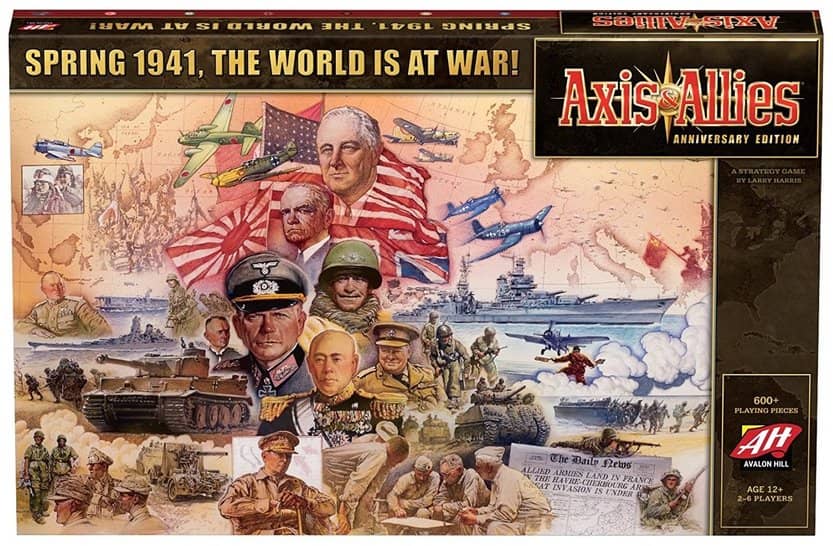
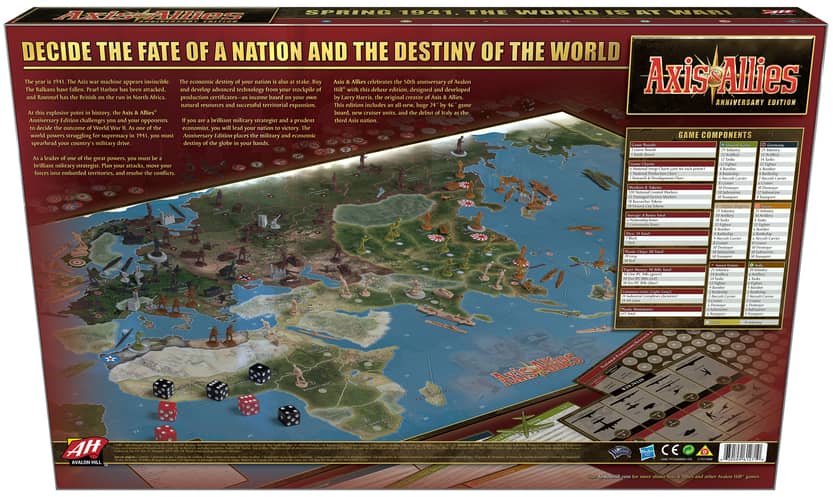
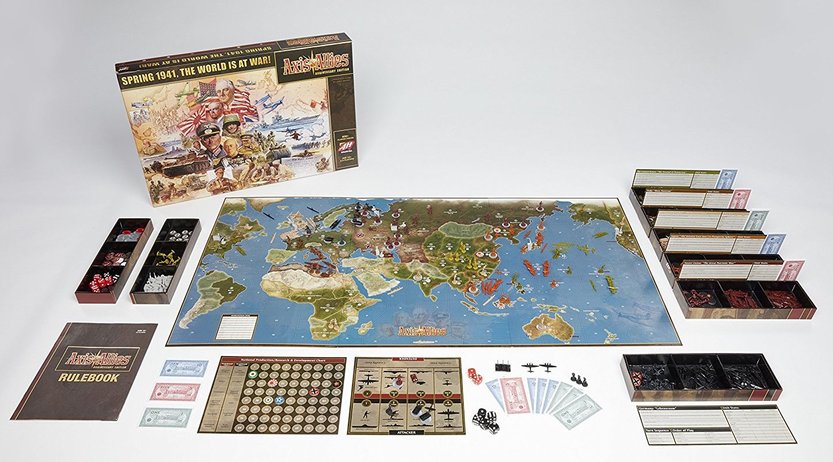
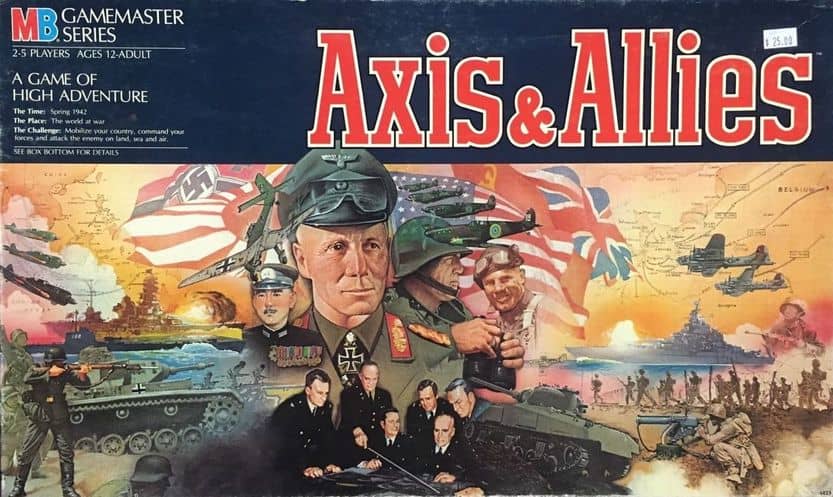
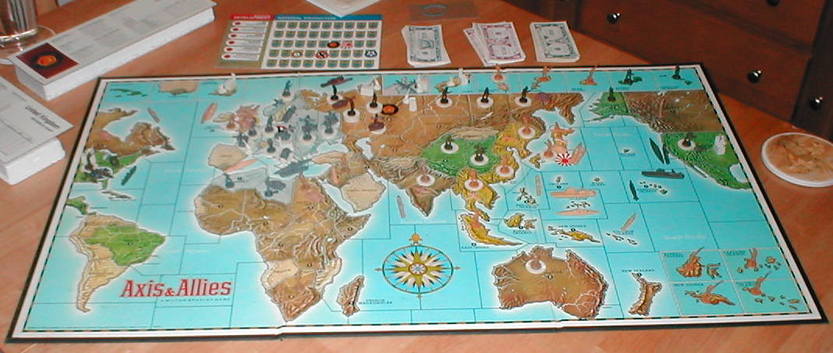
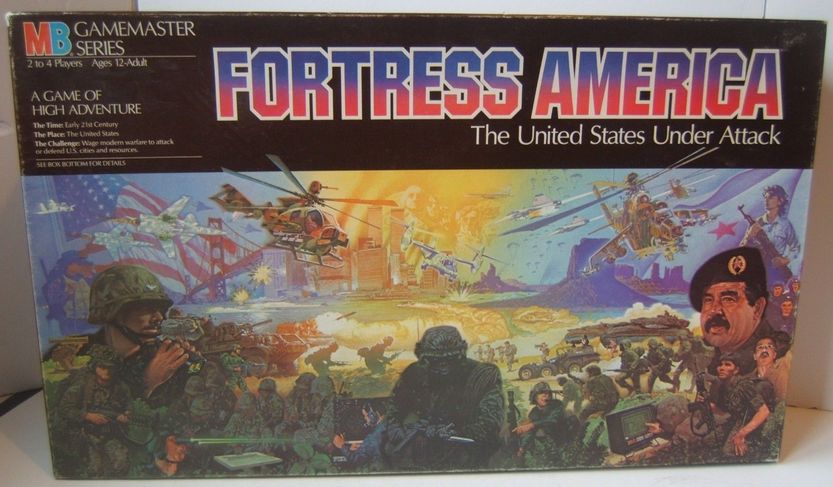
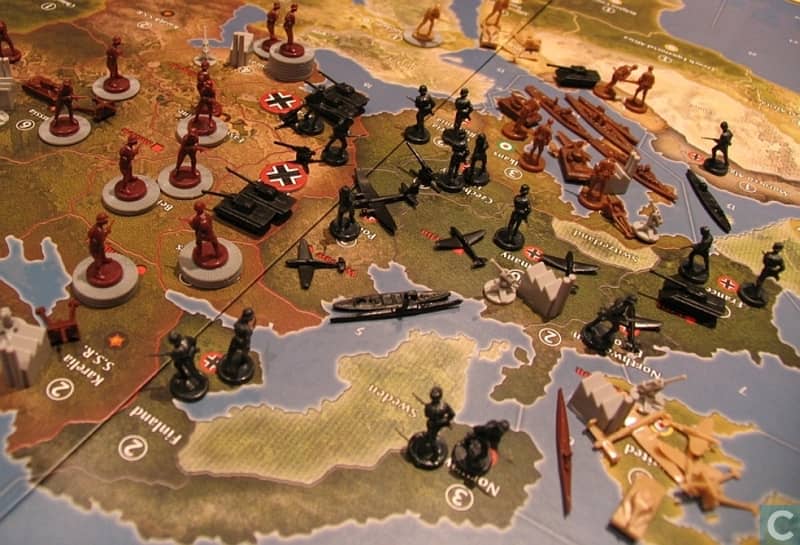
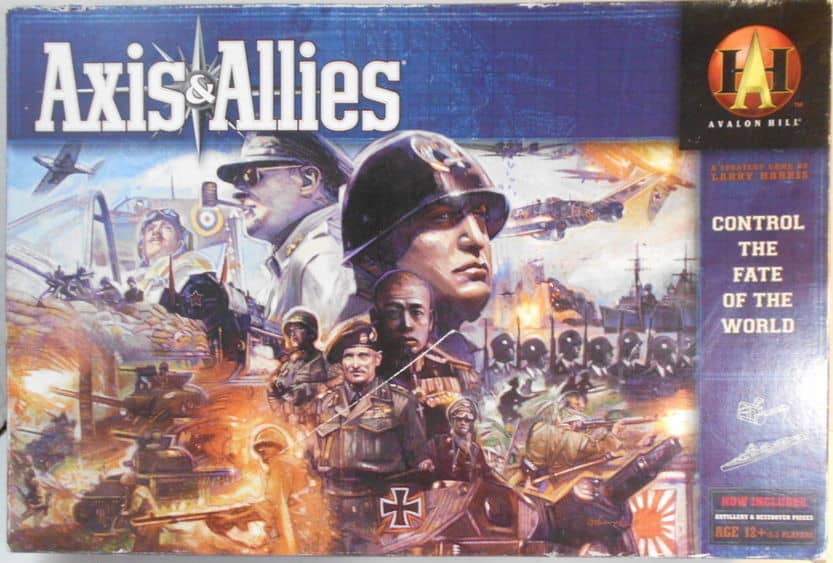
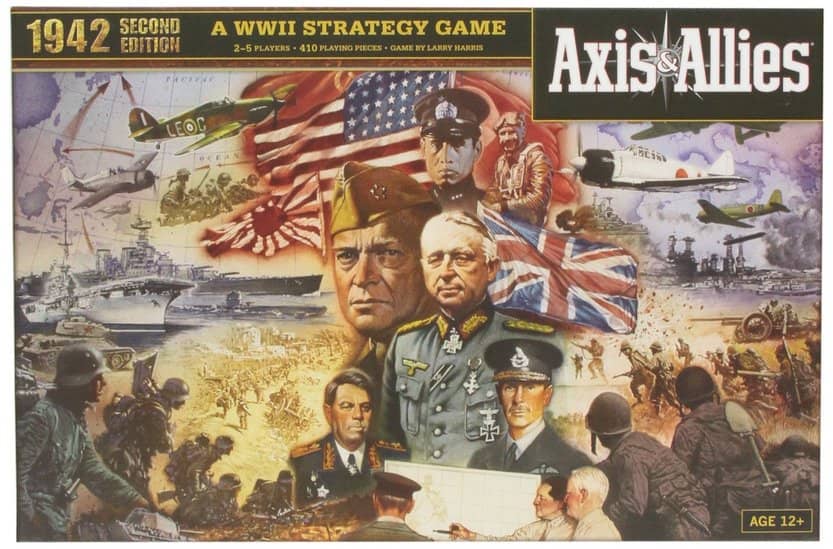
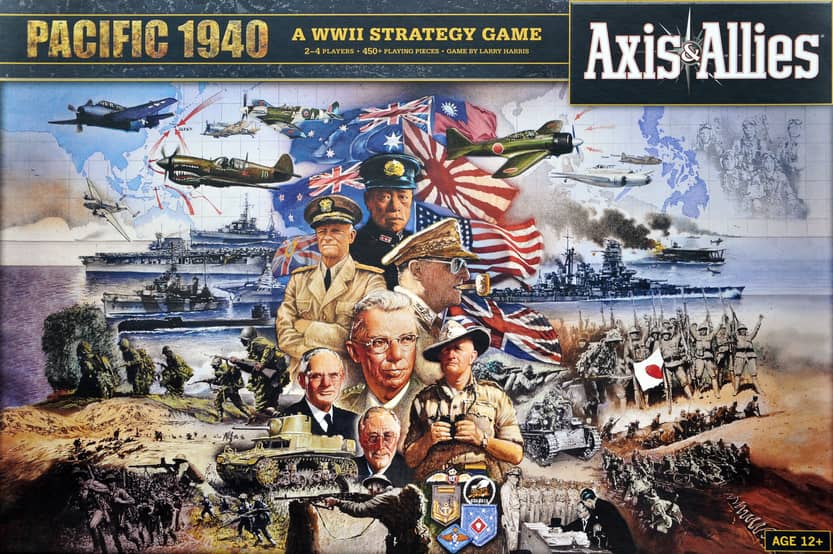
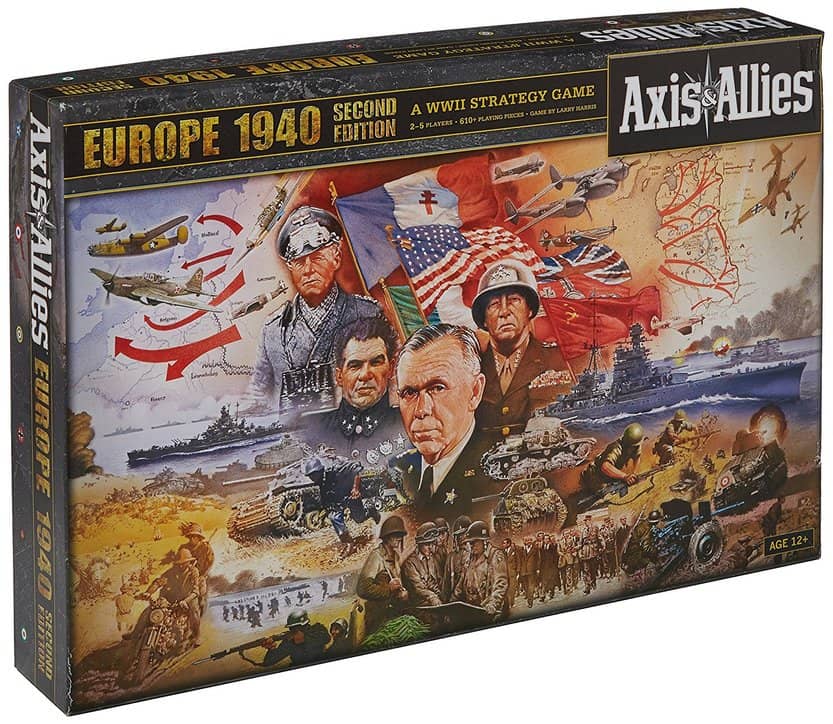
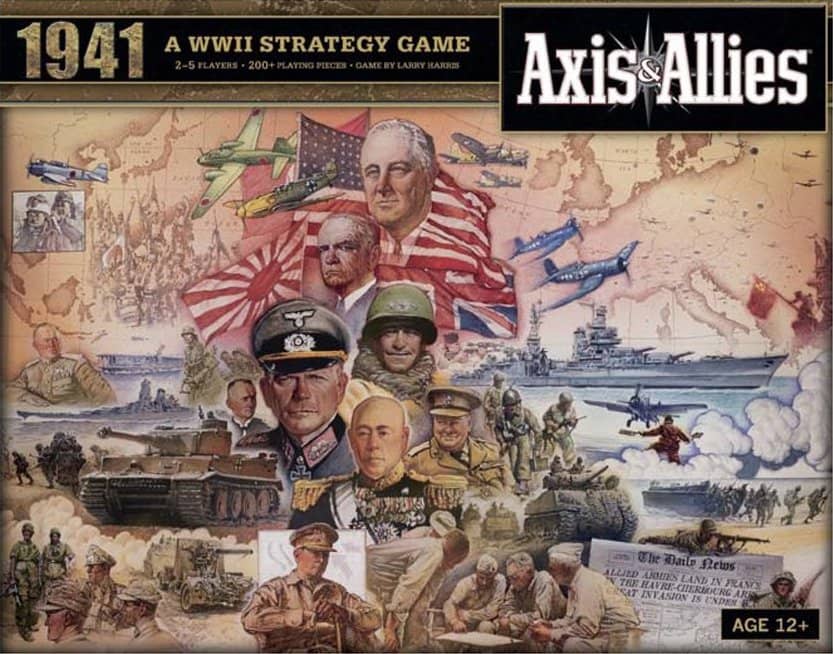
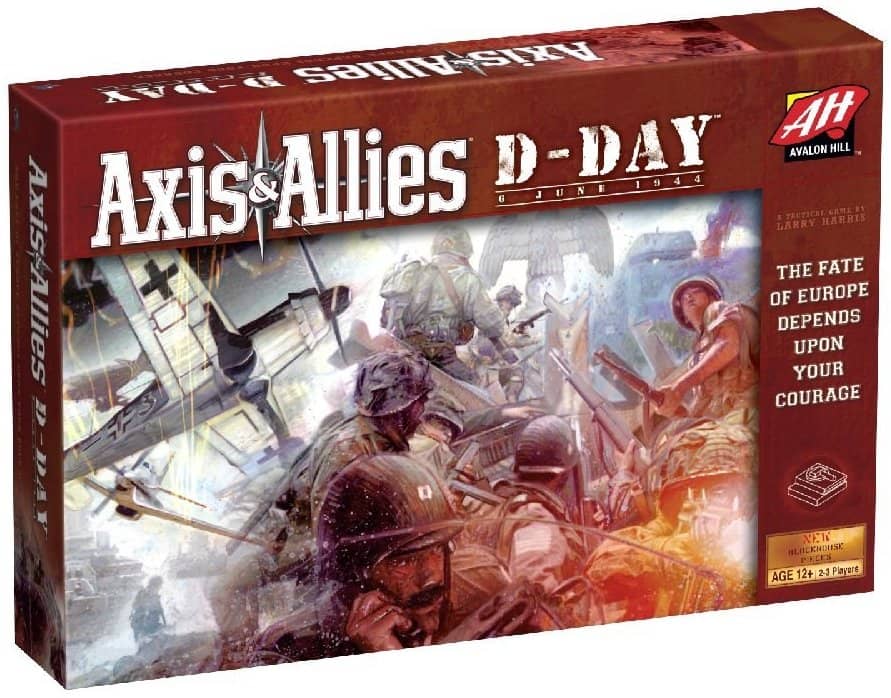
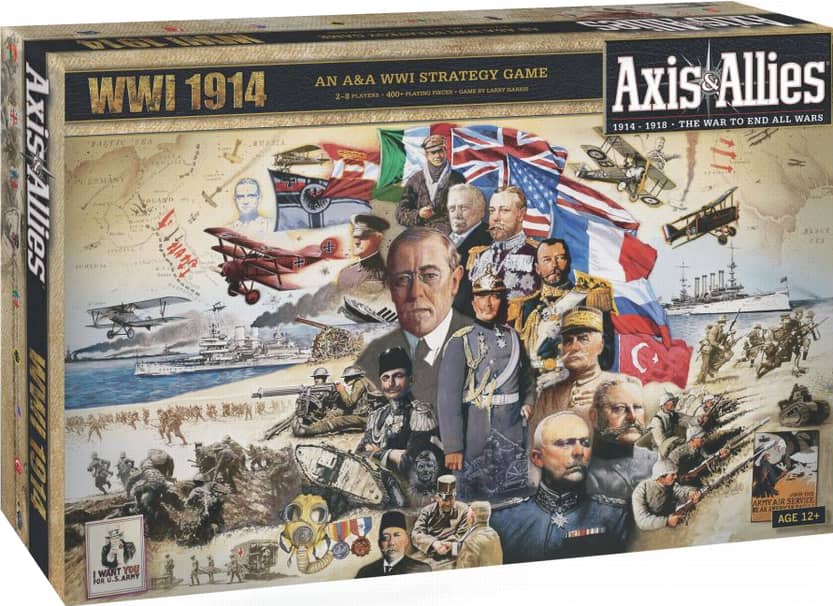
Axis & Allies always seemed like an even more drawn out version of Risk. By the time I really got into board games there were more compact versions of war games out there that scratched the same itch.
I think you can put the Europe and Pacific versions together for a mega game.
Man, the hours, the evenings, the weekends that I lost to Axis and Allies! Glorious! India! Build me a goddam production facility in India! Destroy that goddam production facility in India!
We had a few sessions that we would start on like a Friday night*, play until like 2 a.m. then continue the next day in the afternoon. I think we also had one game where Germany pretty much botched it’s first five or six battles and we wrapped it up in like, an hour and a half.
Part of the epic play length of this game is that it takes like thirty minutes to set up.
It is from Axis and Allies from whence the term “You want to take this to the battle board?” entered our lexicon. A phrase that lends itself to a surprising number of situations.
Axis and Allies 1914 looks interesting, has anybody played it?
One more story– about four years ago my wife and I went for a walk to one of our local parks and there were a group of kids (or perhaps young-adults) sitting in a rough circle on a blanket intensely focused on something. I knew it had to be Axis and Allies because I knew that look, even before I got close enough to see the box or the board or anything.
*we were 17-19 at the time, and often didn’t even decide to play the game until like 10pm.
> I think you can put the Europe and Pacific versions together for a mega game.
Glenn,
Really? Boy, that appeals to the super-big game fan in me!
Though I think I’m more in love with the idea of these massive games than the reality. I’m entranced by the concept of a game that can command your attention for that long. In practice however, they just aren’t that practical.
Maybe someday when I retire, and the kids are out of the house, and I’m not editing a website with 50+ contributors. But for now, one of those smaller scale games with 250 pieces might be the one for me. I guess there’s only one way to find out.
> We had a few sessions that we would start on like a Friday night*, play until like 2 a.m.
> then continue the next day in the afternoon.
Adrian,
We had 5-player RISK sessions that used to take almost that long. I still remember them fondly today.
Have you tried any of the other variations? THe 1914 one appeals to me. But boy, it looks massive.
Wow I knew there were some new versions out but was not aware there were so many. My brother gave me his well used MB version when he moved cities. Actually had a small game with my two boys last week, although the maturity is not quite right for them at present (game ended in accusations of cheating etc).
Conquest of the Empire – ah one of those games I always wanted. From what I have heard it’s also a game one needs a long weekend, sleep deprivation and tons of commitment to enjoy.
John, I never played anything but the classic version, although 1914 intrigues me.
I actually thought I had a copy of Axis and Allies still in my possession– turns out I was wrong. What I’ve got is the even RARER and more awesome SHOGUN.
> Conquest of the Empire – ah one of those games I always wanted. From what I have heard it’s also a game one needs a long weekend…
Tony,
I don’t know anything about it, and not even sure I’ve ever seen a copy. But it certainly looks enticing!
> turns out I was wrong. What I’ve got is the even RARER and more awesome SHOGUN.
Adrian,
Review!
Nice one Adrian. I would also love to see a review of Shogun. I think the game saw a second release as Samurai Swords, possibly something to do with there being a Shogun game based on the James Clavell best seller / TV series?
Shogun was the original name. Then it was reprinted as Samurai Swords in the 90s (i think).
Wizards of the Coast reprinted it again in 2011 calling it Ikusa this time.
> Wizards of the Coast reprinted it again in 2011 calling it Ikusa this time.
Glenn,
You are absolutely right. I should have mentioned that in the article, but I’d managed to completely forget it. I have no excuse, as Scott Taylor was very explicit about it in his 2011 Ikusa review:
https://www.blackgate.com/2011/09/03/game-review-ikusa/
Thanks for connecting the dots for me (again!)